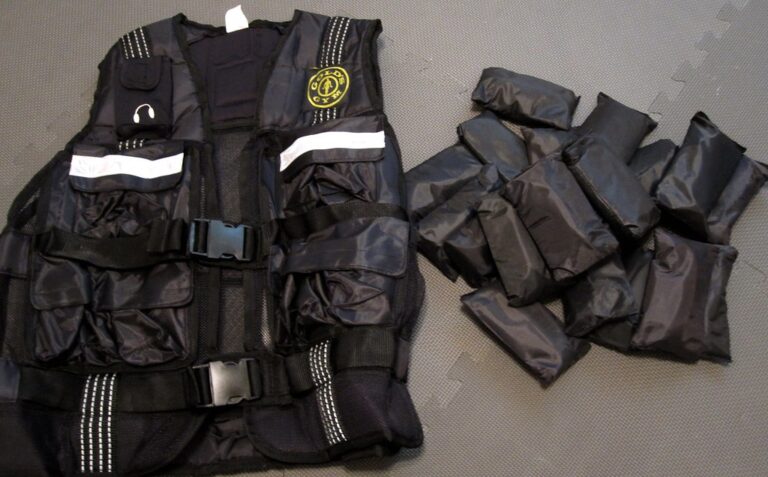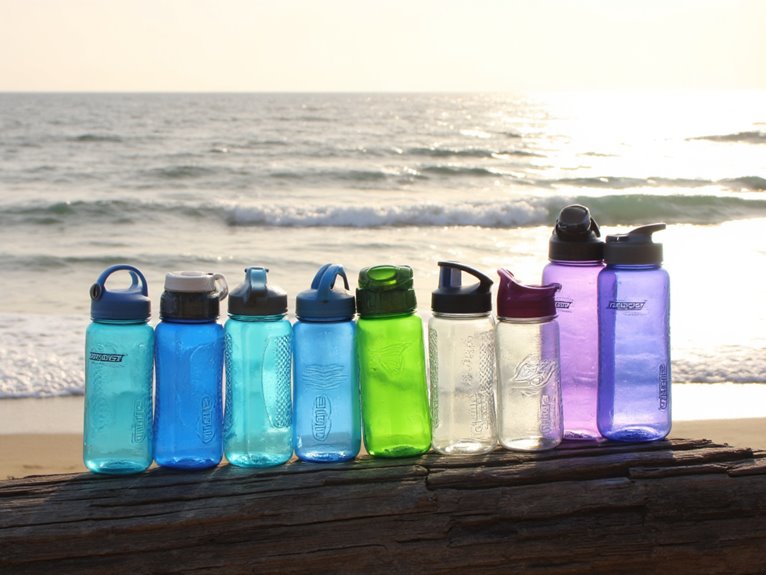What Are the Disadvantages of a Flat Top Grill?
Flat top grills come with several drawbacks, including inconsistent temperature control, leading to hotspots and uneven cooking. They also struggle to infuse food with a rich, smoky flavor, and their high heat output can result in overcooking. Maintenance is a significant concern, requiring frequent cleaning, seasoning, and potentially costly replacements. Additionally, the griddle surface has a short lifespan, and the grill's metal components are prone to rust and corrosion. Moreover, their bulky design and weight make them difficult to transport and store. As you delve into the world of flat top grills, you'll uncover even more nuances that may impact your culinary experience.
We are supported by our audience. When you purchase through links on our site, we may earn an affiliate commission, at no extra cost for you. Learn more. Last update on 31st December 2025 / Images from Amazon Product Advertising API.
Hotspots and Uneven Cooking
Flat top grills often struggle to maintain a consistent temperature across the cooking surface, resulting in hotspots that can lead to uneven cooking and a less-than-desirable dining experience.
This inconsistency in heat distribution can cause food to cook at different rates, making it challenging to achieve the perfect sear or desired level of doneness.
Additionally, hotspots can also lead to burnt or overcooked areas, compromising the overall quality of the dish.
To mitigate this issue, cooks must constantly monitor the grill's temperature and adjust cooking times accordingly.
However, this can be a tedious and time-consuming process, detracting from the overall grilling experience.
Limited Smoky Flavor Production
One major drawback of flat top grills is that they struggle to infuse food with that rich, smoky flavor that many grill enthusiasts crave, leaving dishes tasting somewhat one-dimensional.
This limitation stems from the flat top's design, which doesn't allow for direct flame contact or wood chip smoking.
As a result, foods cooked on a flat top often lack the deep, complex flavors that come from smoking or charring.
While some may argue that a flat top's even heat distribution is a benefit, it's hard to replicate the bold flavors achieved through traditional grilling methods.
For those seeking a more nuanced flavor profile, a flat top grill may not be the best choice.
High Maintenance Requirements
In contrast to their sleek, modern design, flat top grills often conceal a secret: they require a significant amount of upkeep to maintain their non-stick surface and overall performance.
This high maintenance requirement can be a drawback for many users.
To keep your flat top grill in top condition, you'll need to:
Clean the grill after every use, using a gentle scrubber and mild detergent to remove food residue and prevent scratches.
Season the grill regularly, applying a thin layer of oil to maintain the non-stick surface and prevent rust.
Perform deep cleaning sessions, disassembling the grill and soaking its parts in hot soapy water to remove tough grime and food residue.
Risk of Overcooking Food
Several factors inherent to flat top grills can lead to overcooked or burnt food, which can be a major drawback for users who value perfectly cooked meals.
The large, flat cooking surface and high heat output of these grills can quickly cook food, but also increase the risk of overcooking.
Additionally, the lack of individual heat zones and controls can make it challenging to adjust heat levels, further contributing to the risk of overcooking.
This can result in dry, tough, or charred food, which can be a significant disappointment for those who take pride in their culinary creations.
To mitigate this risk, users must remain vigilant and attentive when cooking, constantly monitoring their food's progress to avoid overcooking.
Difficulty With Cooking Delicate Foods
When it comes to cooking delicate foods on a flat top grill, a multitude of challenges arise.
The inability to precisely regulate heat, coupled with the risk of overcooking, can result in a less-than-desirable culinary experience.
Furthermore, the flat top grill's high heat and lack of nuanced temperature control can also compromise the texture of sensitive ingredients, leading to a less-than-ideal dining experience.
Temperature Control Issues
Flat top grills often struggle to maintain a consistent, low heat, making it challenging to cook delicate foods like crepes, pancakes, or fish that require a gentle touch.
This temperature control issue can lead to overcooking or undercooking, resulting in an unappetizing dish.
To overcome this limitation, it's essential to understand the nuances of flat top grill temperature control.
Zone temperature control: Divide the grill into zones to achieve specific temperatures, allowing for more precise control.
Heat diffusion: Facilitate even heat distribution by using a heat diffuser or a cast-iron plate.
Thermometer calibration: Regularly verify your thermometer to guarantee accurate temperature readings.
Risk of Overcooking
Delicate foods, such as eggs, crepes, and fish, are notoriously finicky, and the flat top grill's propensity for high heat can quickly turn them into charred, inedible disasters.
When cooking these sensitive foods, it's essential to maintain a precise temperature and cooking time to prevent overcooking.
However, the flat top grill's high heat output and lack of precise temperature control make it challenging to achieve the perfect doneness.
Even a slight miscalculation can result in a ruined dish.
This risk of overcooking can be frustrating, especially for novice cooks or those new to flat top grilling.
To mitigate this risk, it's vital to carefully monitor cooking times and temperatures to secure a perfectly cooked meal.
Food Texture Problems
In addition to the risk of overcooking, flat top grills can also struggle to preserve the desired texture of delicate foods, often resulting in unappealing, rubbery, or mushy consistencies.
This can be particularly problematic when cooking sensitive foods that require gentle heat and precise temperature control.
Some common issues with food texture on flat top grills include:
- Overcooking of fish: Delicate fish fillets can quickly become dry and rubbery when cooked on a flat top grill.
- Mushy vegetables: Vegetables like asparagus or bell peppers can lose their crunch and become mushy when cooked on a flat top grill.
- Toughened meat: Meats like steak or chicken can become tough and chewy when cooked on a flat top grill, especially if they are not cooked to the correct internal temperature.
Lack of Grill Marks and Texture
One of the most significant drawbacks of flat top grills is the inability to achieve those coveted grill marks and textured sear that many grill enthusiasts crave.
The flat surface of the grill simply can't replicate the high-heat, high-contrast sear that a traditional grill can produce.
This lack of texture and visual appeal can be a major letdown for those who value the aesthetic of a perfectly grilled meal.
Additionally, the uniform heat distribution of a flat top grill means that food is cooked consistently, but without the caramelized crust that adds depth and complexity to grilled foods.
In addition, for those who prioritize presentation and texture, a flat top grill may not be the best choice.
Limited Heat Control Options
Flat top grills often fall short regarding heat control, as their design typically relies on a single heat source, limiting the user's ability to fine-tune temperatures across the cooking surface.
This can lead to hotspots and uneven cooking, making it challenging to achieve perfect doneness.
Additionally, the lack of zone control makes it difficult to cook multiple items at different temperatures simultaneously.
To illustrate this limitation, consider the following:
Inability to create temperature zones
Flat top grills often have a single heat source, making it impossible to create separate temperature zones for different types of food.
Limited temperature range
The heat control options on flat top grills are often limited, making it difficult to achieve precise temperature control.
Hotspots and uneven cooking
The design of flat top grills can lead to hotspots, resulting in uneven cooking and a higher risk of overcooking or undercooking.
Costly Replacement of Griddle
The griddle, a vital component of a flat top grill, can be a significant expense to replace, especially if it's a high-quality or custom-made part.
In addition, the griddle's lifespan can be shortened by frequent use, poor maintenance, or improper cleaning, leading to a more frequent need for replacement.
This can result in a substantial financial burden, making the overall cost of ownership of a flat top grill higher than initially anticipated.
Expensive Replacement Parts
Replacing worn-out griddle surfaces can be a costly affair, as high-quality replacements often come with hefty price tags. This can be a significant drawback for flat top grill owners, especially those who use their griddles frequently. The cost of replacement parts can add up quickly, making it a substantial expense.
Griddle plates can cost anywhere from $50 to $200 or more, depending on the quality and size.
Heating elements can set you back $100 to $300 or more, depending on the type and quality.
Thermostats and temperature controls can cost $50 to $200 or more to replace, depending on the complexity and quality.
These costs can be a significant burden for flat top grill owners, making it essential to weigh the pros and cons before investing in a flat top grill.
Shortened Griddle Lifespan
One of the most significant drawbacks of flat top grills is that their griddle surfaces often have a relatively short lifespan, necessitating costly replacements that can quickly add up over time.
The constant exposure to high heat, grease, and food residue takes a toll on the griddle, causing it to degrade faster.
This shortened lifespan can be a significant expense, especially for commercial users who rely on their flat top grills for daily operations.
Regular cleaning and maintenance can help extend the life of the griddle, but eventually, replacement becomes inevitable.
The cost of frequent replacements can be a significant burden, making it essential to factor this expense into your overall budget.
Susceptible to Rust and Corrosion
Flat top grills made from metal, particularly those with a chrome or iron composition, are inherently prone to rust and corrosion when exposed to moisture and high temperatures.
This susceptibility can lead to a range of issues, including:
Reduced durability: Rust and corrosion can weaken the grill's structure, making it more prone to damage and reducing its overall lifespan.
Unpleasant flavors: Rust and corrosion can also impart unpleasant flavors to food, compromising the taste and quality of your dishes.
Increased maintenance: To prevent rust and corrosion, you'll need to regularly clean and season your grill, adding to your maintenance burden.
Limited Portability and Storage
The convenience of outdoor cooking is often hindered by the physical constraints of a flat top grill, which can be a significant drawback for those who value mobility and flexibility.
The bulky design and substantial weight of these grills make them difficult to transport and store, limiting their use to a fixed location.
In addition, their large footprint consumes valuable space, making them impractical for small kitchens, patios, or campsites.
Bulky Design Limitations
Built with a robust framework to support high-heat cooking, flat top grills often sacrifice portability and storage convenience in the process.
This bulky design limitation can be a significant drawback for those who value convenience and flexibility in their outdoor cooking experiences.
Some of the key implications of this design limitation include:
Reduced mobility: Flat top grills are often heavy and cumbersome, making them difficult to transport to different locations.
Limited storage options: Their bulky size and shape can make them challenging to store in compact spaces, such as small balconies or patios.
Increased space requirements: Flat top grills require a significant amount of space to operate safely and efficiently, which can be a challenge in areas with limited real estate.
Weight and Size Issues
In addition to their bulky design, flat top grills are often characterized by excessive weight and size, which further exacerbate their limited portability and storage capabilities.
This makes them difficult to transport, especially for outdoor events or camping trips.
Additionally, their substantial size occupies a significant amount of space, making storage a challenge, particularly in small kitchens or apartments.
The weight of these grills also makes them prone to damage during transportation, which can lead to costly repairs or even render them inoperable.
Furthermore, the weight and size issues of flat top grills can be a significant drawback for those who value convenience and versatility in their cooking experience.
Space Consumption Concerns
Flat top grills' considerable space requirements necessitate careful planning and compromises, particularly for those with limited kitchen real estate or frequent travelers. The bulkiness of these grills can be a significant drawback, making them challenging to store and transport.
Kitchen Counter Space: Flat top grills occupy a substantial amount of counter space, leaving limited room for other essential kitchen appliances and utensils.
Storage Challenges: Their large size and weight make them difficult to store in compact spaces, such as apartments or RVs.
Portability Issues: The heavy and bulky design of flat top grills hinders their portability, making them unsuitable for outdoor events, camping, or tailgating.




